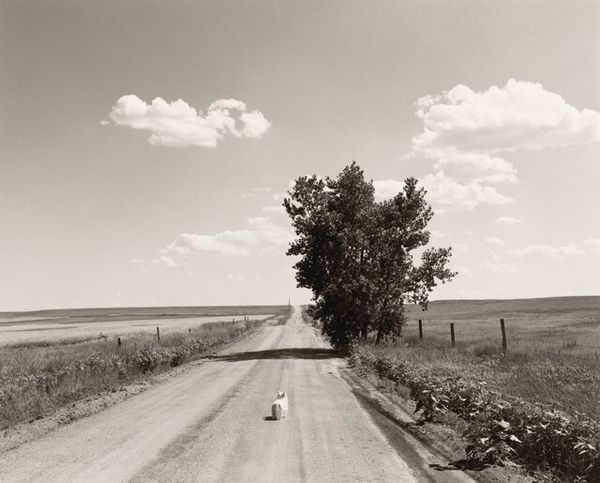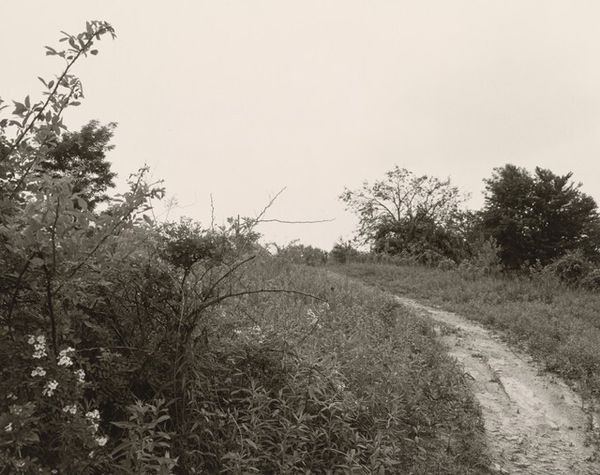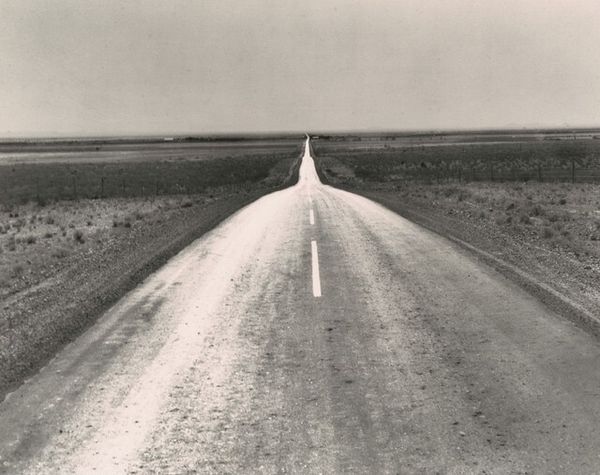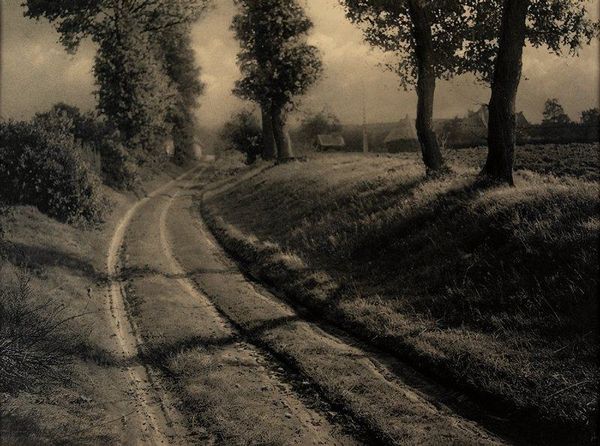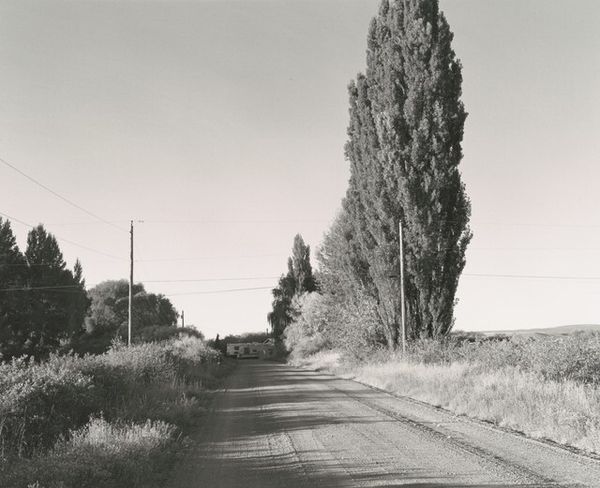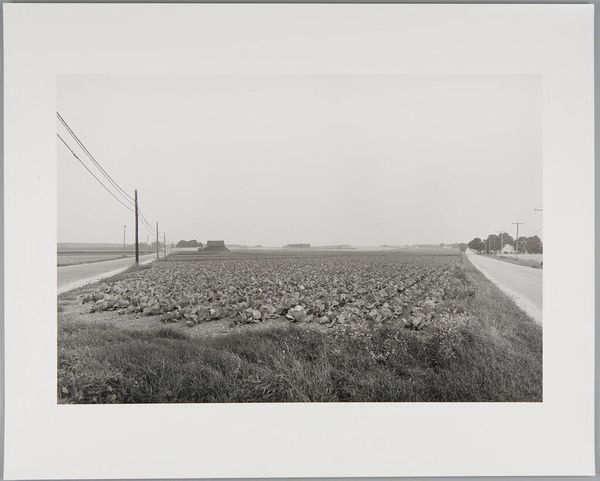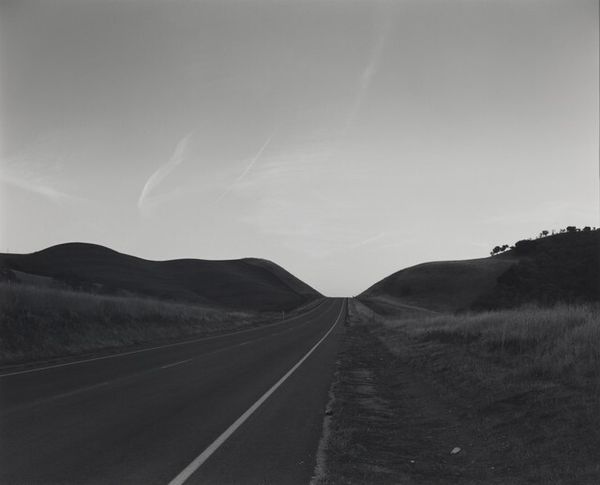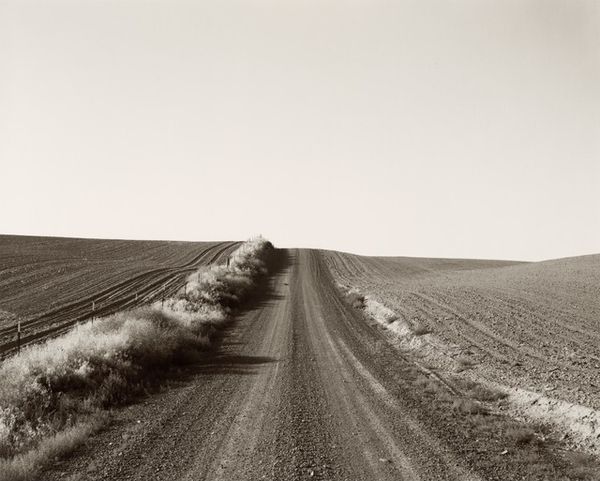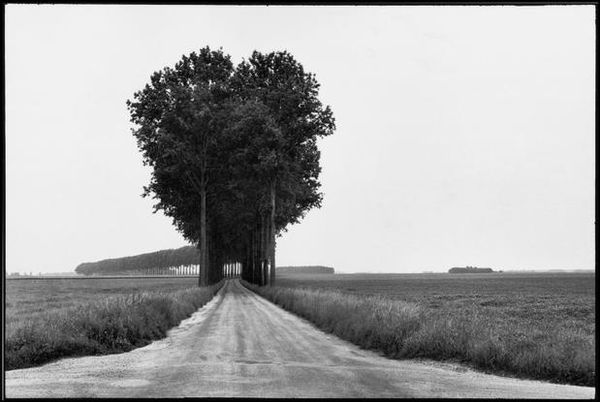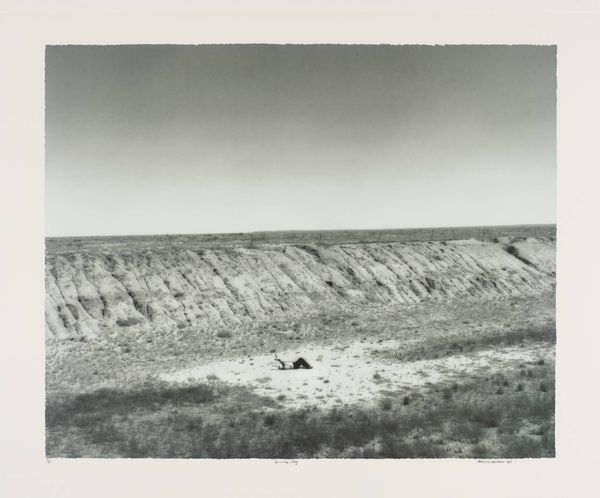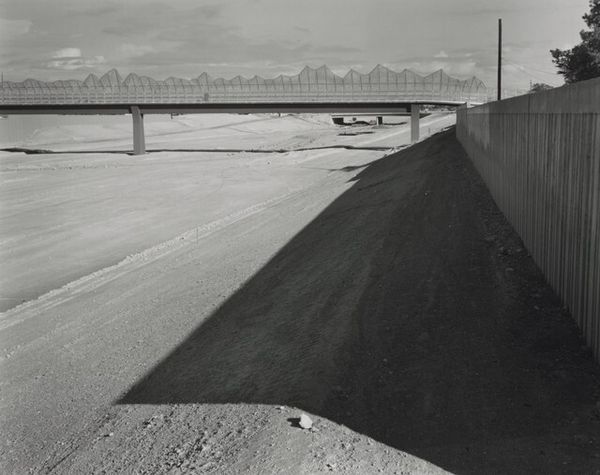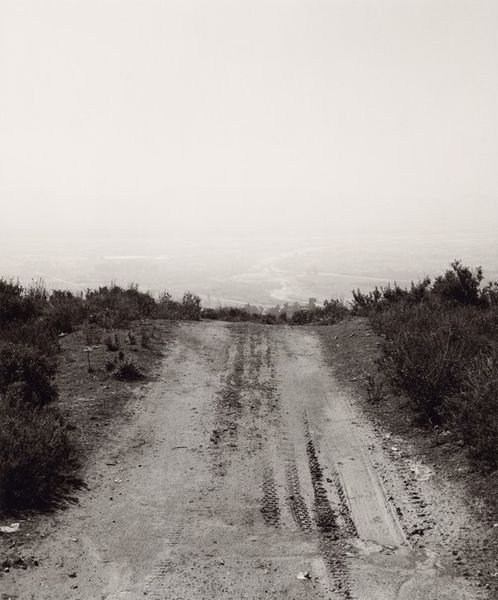
Nebraska State Highway 2, Box Butte County, Nebraska Possibly 1978 - 1991
0:00
0:00
plein-air, photography
#
contemporary
#
conceptual-art
#
black and white photography
#
countryside
#
plein-air
#
landscape
#
black and white format
#
warm monochrome
#
photography
#
outdoor scenery
#
black and white
#
monochrome photography
#
monochrome
#
skyscape
#
realism
#
monochrome
#
shadow overcast
Dimensions: image: 22.2 × 27.8 cm (8 3/4 × 10 15/16 in.) sheet: 27.7 × 35.4 cm (10 7/8 × 13 15/16 in.)
Copyright: National Gallery of Art: CC0 1.0
Curator: Looking at "Nebraska State Highway 2, Box Butte County, Nebraska" by Robert Adams, made sometime between 1978 and 1991, what strikes you first? Editor: An immense quiet, I think. And that the road seems almost abandoned, receding into the distance. Curator: Yes, a quiet desolation. Adams often photographed the changing landscapes of the American West, paying close attention to how human intervention shapes the land. Think about the road itself – a manufactured element cutting through the natural grasslands. Editor: Precisely! The material contrast is really interesting. The cracked asphalt, the clumps of dead leaves, set against the endless prairie. It makes you consider the infrastructure's intended use versus its actual impact, doesn't it? How the materials of this project aged and decomposed back to the earth. Curator: Absolutely. Adams was deeply concerned with the environmental impact of development. The stark black and white photography further emphasizes this, removing the potential romanticism of color and highlighting the formal structures and textures. The composition draws your eye to the vanishing point, yes, but what does it mean when civilization itself seems to be fading? Editor: Well, the placement in a museum adds another layer. We take this image, originally a critique of societal progress, and legitimize it through institutional display. Are we then simply aestheticizing environmental damage, or fostering dialogue? Does photography by becoming an exhibit transform its message? Curator: It is always a balance. But, it is important to provide a space to see what these highways have meant for society. This photograph asks tough questions about land use, doesn't it? The impact is so much broader than just asphalt and dirt. Editor: Indeed. Adams leaves us not with answers, but with a powerful invitation to reflect. Curator: To truly consider the cost of our societal choices. Editor: I will not travel this highway quite the same ever again, that much is true.
Comments
No comments
Be the first to comment and join the conversation on the ultimate creative platform.
